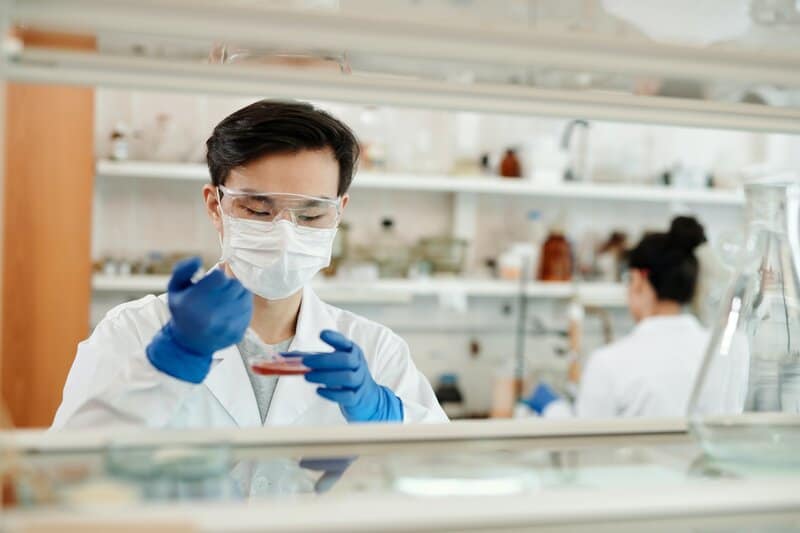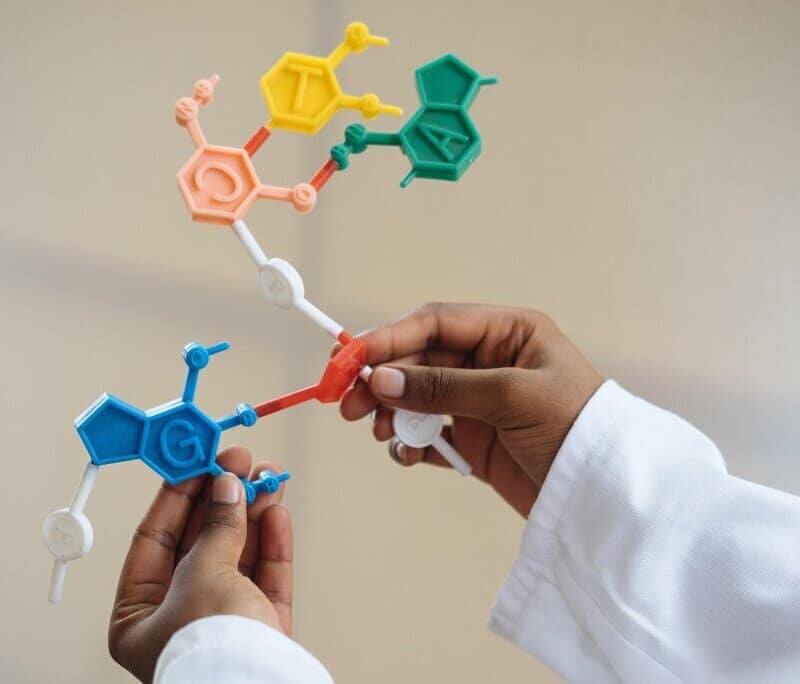- This post may contain affiliate links which - at no cost to you - may generate a small fee for us. It helps us research and review products more effectively
What are Animal Testing Alternatives?
Animal testing alternatives are methods used to determine product or ingredient safety and efficacy that don’t utilise animals. They are the future. But should be the present.
There are dozens of animal testing alternatives available – including computer modelling, 3D cell culture, cell based tests, in vitro cell culture. And due to innovations in science, animal tests are being replaced with cheaper, more reliable methods.
Why are Alternatives to Animal Testing Important?
On top of being unreliable and inhumane, animal testing is famed for it’s expense and requirement of skilled manpower.
With the advancement of R&D in medical technology the number of animals used in research has increased dramatically over the years. Even with the implementation of various rules and regulations around the world, there are millions of animals used for testing purposes.
The goal must be to better utilise animal testing alternatives wherever possible and begin by putting the principle of the 3 R’s in place.

Why are The Three Rs vital for providing Alternatives to Animal Testing?
The Three Rs are designed to guide the ethical evaluation of animal use by reducing the number of animals used by replacing and / or refining animal tests. The premise is that animals should only be used if there a scientist(s) has failed to find a feasible alternative.
1. Replace
Firstly the goal should be to just replace the use of animals in the test. Ideally with inanimate systems like computer modelling. But this can also include replacing more ‘sentient‘ animals with animals that we don’t believe suffer pain – typically invertebrates.
2. Reduce
Refers to any strategy that that results in fewer animals being used in order to get sufficient data without compromising animal welfare.
3. Refine
Refers to any method that minimises the pain and distress suffered by animals within testing.
Why do we Test on Animals?
Well, according to the FDA:

Animals are sometimes used in the testing of drugs, vaccines and other biologics, and medical devices, mainly to determine the safety of the medical product.”
The FDA
Animals are used in testing for products and medical breakthroughs for multiple reasons – many of them salient:
- We share 85% of our genetic makeup with a mouse
- We have the same, or at least very similar, organ systems
- We suffer from the same, or again at least very similar, diseases
These similarities have allowed for medical breakthroughs and advancements that have dramatically changed the quality of our existence. And animal testing has, unfortunately, played a crucial role in that.
How Many Alternatives to Animal Testing are there?
According to Humane Society International, there are almost 50 viable alternatives to animal testing, with many more in development. These modern alternatives offer results that, in the eyes of many, are more relevant to people and certainly more cost-effective and efficient.
Animal Testing vs Animal Testing Alternatives
Animal Testing
- Animal testing’s current predictive power is around 60% effective
- It’s future predictive power is predicted to reach around 70%
- $3,000,000 per chemical for animal testing
- The non-genotoxic cancer test costs $700,000 per tests
- Animal testing has a 96% failure rate of bringing compounds to market – due to a lack of efficacy and the toxic effects in humans
- Some rodent cancer studies can cost up to $4 million to complete
- The average time to bring a drug to market is 10 – 15 years
- And some tests take longer than 2 years
Animal Testing Alternatives
- Biological pathway based testing method’s current predictive power is 55%
- And will reach >90% within the next decade
- Animal testing alternatives are, on average, almost 90% cheaper than animal tests themselves
- $60,000 per chemical for biological pathway based testing
- The in vitro alternative to the non-genotoxic cancer test is 97% cheaper
- Animal-free alternatives to the Lethal Dose test have 50% greater accuracy than the animal counterparts
- Utilising reconstituted human skin (gross) has an almost 50% greater accuracy than the Draize skin irritation test
Why is Animal Testing Inaccurate?
Animal testing’s current predictive power is relatively low because animals aren’t genetically identical to humans. Chemicals or products that don’t appear to harm or cause irritation to animals have no guarantee that the effect will be the same on humans.
Even the estimated future predictive power isn’t much higher – We’ve nearly reached a natural plateau.
Whereas whilst the current predictive power of biological pathway based methods is slightly below animal testing, the future looks extraordinarily bright for alternative methods, like using cultured cells instead of animals.
As researchers learn more about these pathways, they realise just how complicated they are. They have no real boundaries and can act together to form what’s known as a biological network. This will help us understand more about how an individual will respond to a particular chemical – a legitimate pathway to chemical or product personalisation.

So Why is Animal Testing so Expensive compared to it’s Alternatives?
Animal testing is so expensive and has such a low yearly output for a number of reasons:
- Such is the regulation(s) around animal testing, companies that exploit this tactic have to have round the clock care for these animals.
- Caring for these animals includes: round the clock care by fully trained professionals, housing, transportation and sustenance – all of this doesn’t even include running the procedure itself.
- And a test could take upwards of two years (4-5 years in some cases according the the HSI) and there could be 2,000 animals involved
Alternatives to Animal Testing for Cosmetics
In Vitro Cell Culture
In vitro cell culture is an excellent way to screen compounds at early stages and thus reduce the number of animals needed in testing. For example, use of the human hepatocyte culture gives the information about how a drug would be metabolised and thus eliminated from the body.
Originally this was performed in situ for obtaining hepatocytes from rats. Not something we can faithfully condone.
However now this technique has been adapted to the ex vivo treatment of human liver from organ donors. We have managed to create a process that involves the genetic modification of cells outside of the body.
So human or animal cells can be kept outside of the body for potentially years at a time – if in a suitable medium. This is a much more cost-effective and efficient way to begin testing.
Computer Modelling (In Silico Tests)
Specialised computer models and software programs have been developed to predict the various potential effects of a compound or product without the need for (unwilling) animal participants.
These in silico models can be used to predict the ocular irritancy of chemicals or fully formed products based on previous in vivo results. Whilst these simulations cannot completely replace experimentation – as simulations (to some degree) are approximations of what will occur – they’re excellent in reducing the number animals required throughout the testing process.
Unfortunately whilst these in silico tests are much more efficient and cost-effective none have been able to fully replace the archaic Draize Test – despite the fact that a number of these models have been proved to be reliable and robust.
Cell Based Tests and Tissue Modelling
There are a variety of cell-based and tissue modelling tests that are designed to assess how safe cosmetics or other consumer products are.
These tests reduce the number of animals used by replicating how skin or tissue would react with the product(s) or ingredients in question.
- Companies like Cell Systems, Mattek, GmbH and EpiSkin have developed skin and eye models made from reconstituted human skin. And other tissues have been developed to be used to replace the cruel rabbit irritation tests.
- Dr. Bjӧrn Ekwall (a leader in the field of in-vitro technology) developed a replacement for the LD50 (lethal dose) test using donated human tissue that measured toxicity at a 77-84% accuracy
- Whereas running this same test with mice only allow us to measure toxicity at circa 52-60% accuracy.
Researchers at The University of Dundee have even created a human skin culture system that closely mimics intact, living skin. Ten Bio Ltd. (a part of Dundee University’s School of Life Sciences) have acquired funding from the Scottish Enterprise Early Stage COVID Pre-Seed Fund and recently signed a contract with a global cosmetics company.
What sets this product apart is that the human skin is stretched to an optimal tension to mimic the exact conditions that exist in living skin. This provides a state-of-the-art tool for skin biology research and pharmaceutical and cosmetics testing.
Other models don’t incorporate this tension, and this is why our product is more effective. When skin is removed from the body it contracts as the tension relaxes.
By stretching the skin to an optimal tension, we have created a model that will allow pharmaceutical and cosmetics companies to generate pre-clinical data that will be much more predictive than…”
Dr. Conneely
Organotypic Models
Ocular organotypic models use organs procured from slaughterhouses – certainly not our preferred method – as replacements to live animals. Unfortunately these tests do have certain downsides when compared to their in vivo equivalent as the isolated eye has no:
- Tear film (the lack of which can result in higher false positive test rates)
- Blood flow
- Nerve activities
So whilst this test doesn’t use live animals, it relies on the presence of animal organs.
Although the development of further tests allows for other organotypic tests using the organs of different animals (cows, chickens, pigs) -traditionally more available in the western world.
3D Cell Culture & Organs On Chips
One of the more extraordinary advancements in modern medicine has been our ability to build tissue models using 3D cell culture and organs-on-chips.
To fully understand how cells and tissues function it’s critical to understand how they behave as part of an overall ecosystem, not just as singular entities. This is where 3D cell culture thrives and where 2D cell culture fell down.
3d cell cultures mirror the culture of living cells within microfabricated devices having 3D structures that mimic tissue – and organ -specific microarchitecture.”
Huh, Hamilton and Ingber, 2015
Researchers at Harvard’s Wyss Institute have utilised more traditional computer microchip manufacturing methods to engineer devices that mirror the microarchitecture and functionality of living human organs.
These microdevices, called Organs-on-Chips, offer a potential alternative to traditional animal testing. They are essentially living, 3D cross-sections of key sections of whole living organs that provide a seethrough window into the inner workings of human cells in living tissues.
This remarkable development has been licensed by Emulate Inc. and is being developed and commercialised for us across multiple sectors including – pharmaceuticals, biotechnology and cosmetics across many others.
This refined in vitro method is a surefire way to replace and reduce the number of animals involved in tests.
Animal Testing Alternatives FAQs
Because testing on animals is entrenched in medical processes and unfortunately make a lot of money for companies across the world.
But attitudes are starting to change as more alternatives – with faster, more accurate results – crop up.
In 2021 alternatives to animal testing are at least as accurate as testing on animals. They are certainly more cost-effective and quicker to implement. Even supplying us with much more storable data.
Yes, absolutely. And they are more effective from an accuracy and cost standpoint.
In 2021, there are around 50 alternatives to animal testing that are accessible and accurate enough to be used instead.

